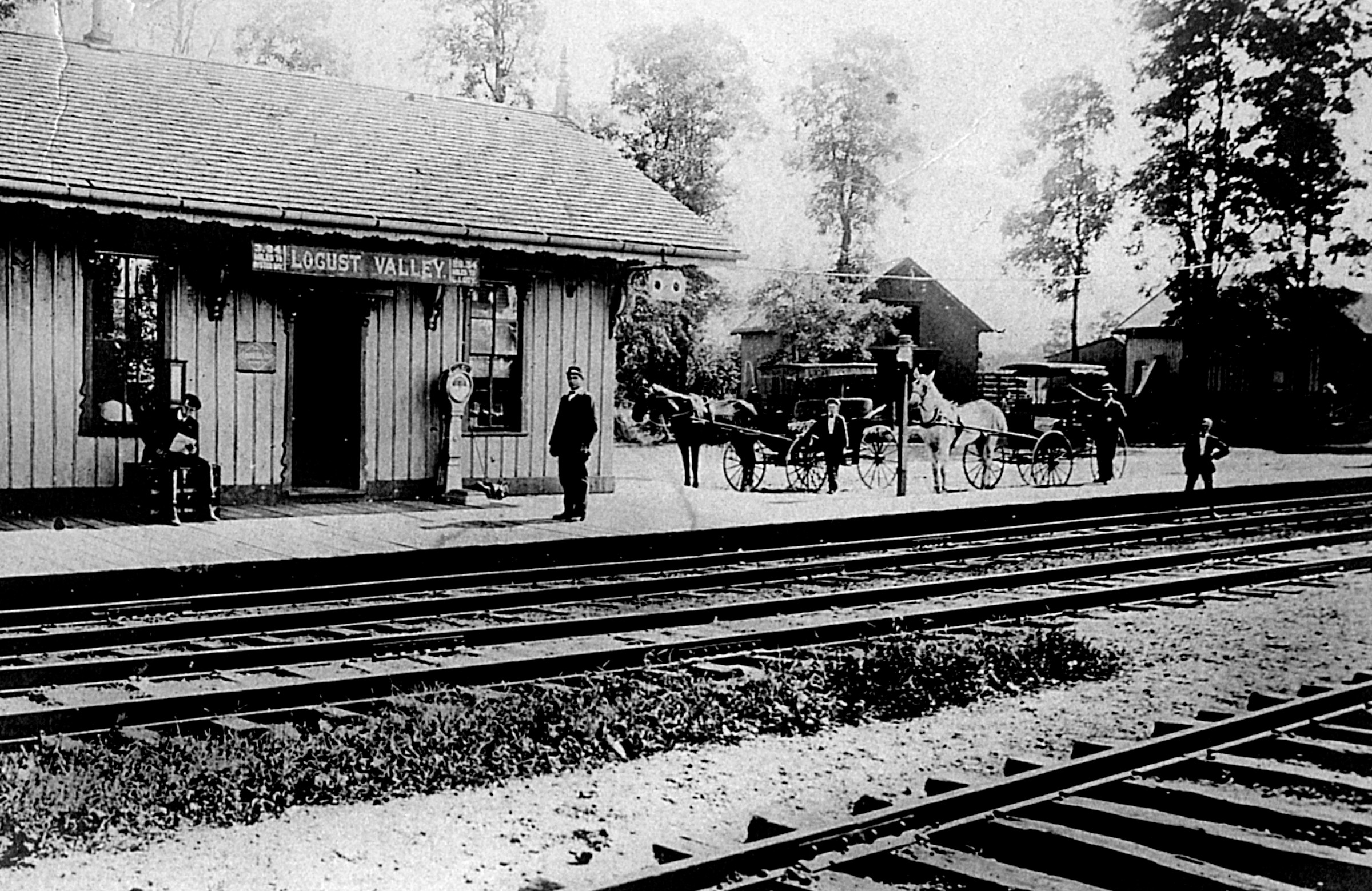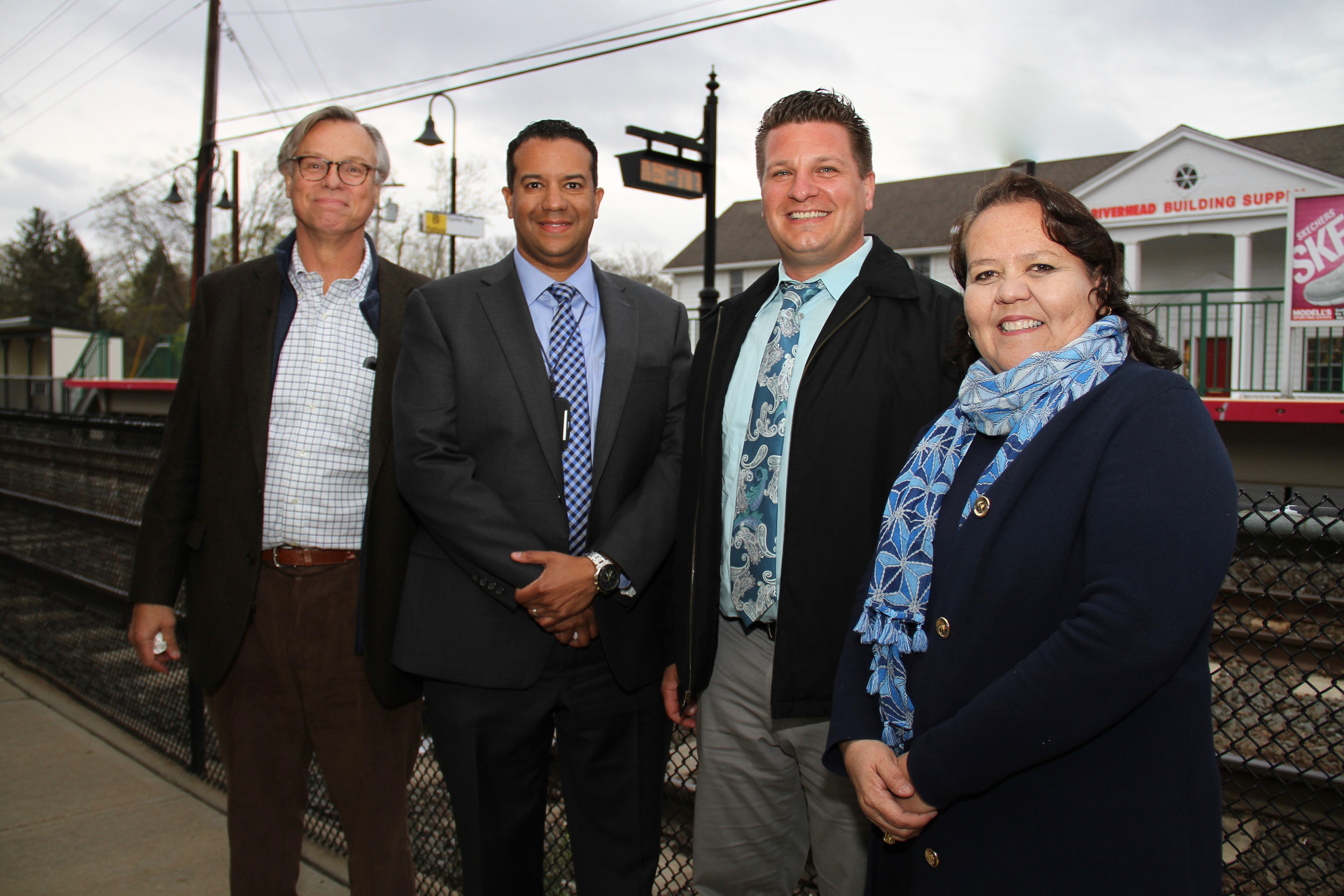Locust Valley train station gets a $400K facelift
If it’s fair to say that putting a train station in Locust Valley 150 years ago was a key moment in village history, it’s also fair to say that the $400,000 renovation of the station over the winter was a great way to burnish that history.
With that thought in mind, the Matinecock Neighborhood Association celebrated the renovation of the Long Island Rail Road station on April 19 as an opportunity to honor local history.
“Bringing the railroad to Locust Valley in 1869 was a great catalyst for our community,” said Kaye Weninger, president of the association. “Back then it was a big deal trying to get produce to New York City by horse and buggy. Building the railroad to here helped with that, and within a few years it began to bring wealthy residences to the region.
Locust Valley’s first stationhouse was by Buckram, and was once the terminus for the Glen Cove line.
“When they pushed the line through to Oyster Bay, they couldn’t negotiate the curve from Buckram,” Weninger explained. “So they moved the station to its current location and ran the track straight from there, toward Oyster Bay. That’s when they started to call the station Locust — you can see the red sign on the depot building. It still says that.”
The current station building was built in 1909, and over the years there have been three “Band-Aid renovations,” she noted. “The last one was in 1965. They kept the original benches and windows. They kept the old bathroom, with the pull chain.”
This time around, the renovation is considerably more substantial — and meant to recollect the historic look of the structure. New benches have been put in on three sides, but they mimic the original seating. Victorian-style steam radiators have replaced baseboard heating. The walls are attractively finished with chair railing, painted in a traditional Long Island pea-green. Floors and ceiling have been lovingly restored.
There are five antique photos of the station and depot area, and the ticket-taker’s window has been adapted as a small display case for books.
Some concessions to the 21st century can be found, however. They include an LED display for train times, modern air conditioning, a handicapped-accessible toilet and heavy-duty doors, custom made to fit the old portals of the 1909 structure.
While outdoor planters, benches and roof tile replacement remain to be completed or added, most of the work was done over the winter in time for the celebration.
The specifics of the facelift derive from a wish list the neighborhood association gave the LIRR a year ago, Weninger said. “When Cathy Goodman and I reached out to the LIRR, we basically told them we wanted the original look of the depot, even if it took five years,” she said. That was March 15, 2016. “We had a number of calls back and forth, and meetings. They listened to what we were saying.”
In July, the association got a call saying its wish would be granted.
While this is not the biggest project the association has ever undertaken — building the Locust Valley Library, preserving the train depot and renovating the American Legion Hall came to Weninger’s mind — it is one she said she was proud to call the association’s own.
“This station is our history,” she said. “Renovating it is history. And using it is history. Every day, people who make up our community use this station to commute to work in New York City. Our commuters are important to who we are.”

 63.0°,
A Few Clouds and Breezy
63.0°,
A Few Clouds and Breezy 







